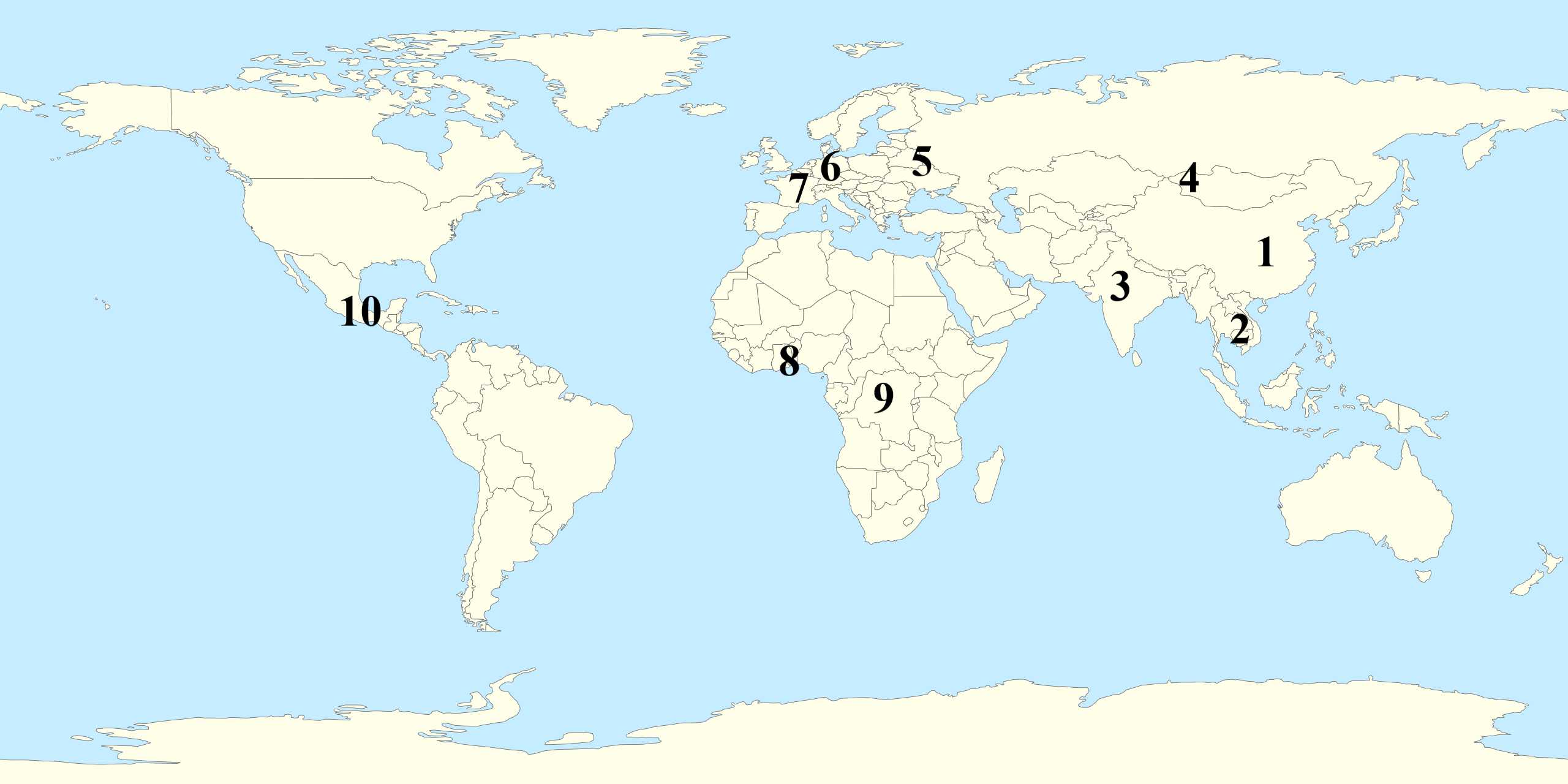
Conquest, War, Famine and Death Quiz
Aptly titled after the Four Horsemen of the Apocalypse, this quiz touches upon some human-made disasters that severely impacted the total population of a country, region, or even the whole world. Can you locate these tragic events on a map?
A label quiz
by LadyNym.
Estimated time: 3 mins.
